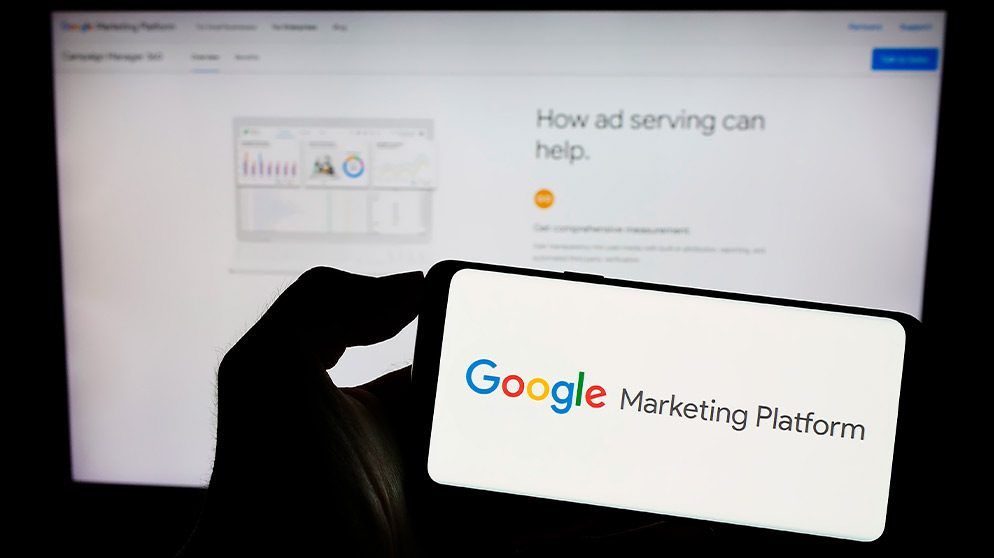
Hey, advertisers! Big news — Google is stirring the pot with a fresh test for Performance Max (PMax) campaigns: channel-level reporting. Yep, the “black box” mystery might finally be unraveling, giving you the lowdown on exactly where your ad spend is going.
Advertisers have been craving more transparency in Performance Max for ages. Right now, running a PMax campaign feels a bit like playing a slot machine—you put your money in and hope for a jackpot.
But with this new test, Google is finally handing out itemized receipts, showing exactly where your budget is being spent—be it Search, Display, YouTube, Discover, Gmail, or Maps.
So, is this the update we’ve all been waiting for? Let’s find out.
Big Shake-Up: What’s Changing?
Google is testing a game-changing update that will let advertisers break down their PMax campaigns by channel. Until now, advertisers could see their overall campaign performance but had no clue how their budgets were split across different Google platforms.
With this new test:
- Advertisers can view how their Performance Max ads perform on different Google platforms.
- They get insights into where their budget is being spent—whether on YouTube, Search, Display, or Discover.
- Marketers can refine their strategies by adjusting creative assets and audience targeting based on channel-specific insights.
Kirk Williams, founder of Zato, was one of the first to highlight Google’s test, and reports from Google Think events suggest that channel reporting may soon become a widely available feature. Some large advertisers in the UK have reportedly gained access to the new reporting format.
Why It Matters

This new feature could change the way advertisers manage Performance Max campaigns. Here’s why you should care:
1. Smarter Budget Allocation
Right now, you’re trusting Google’s AI to spread your budget wisely. But what if YouTube is eating up most of it while Search is quietly driving all the conversions? Channel reporting could finally help advertisers make informed budget decisions instead of just hoping Google’s AI gets it right.
2. Creative Optimization Like a Pro
A killer Search ad doesn’t necessarily work for YouTube, and a strong YouTube video might flop on Display. With channel-specific reporting, advertisers can tweak their creative approach for each platform. This will help them make ads more engaging and effective.
3. More Control Over Bidding and Audience Targeting
PMax’s automation is powerful but frustratingly opaque. With this new insight, advertisers can fine-tune their bidding strategies and audience targeting based on real data instead of just taking Google’s word for it.
4. Goodbye, Black Box?
Advertisers have long complained that PMax campaigns feel like a mysterious AI-driven money pit. Channel reporting is a step toward greater transparency, which means fewer guessing games and more data-driven decision-making.
Industry Reactions and Expert Insights
So, what do the experts think?
- Optimistic marketers: Many advertisers welcome the increased transparency. Melissa Mackey, a leading digital marketer, mentioned that “clients do ask about where their ads are serving, and it would be great to actually tell them.”
- Cautious skeptics: Some experts wonder whether Google will provide deep, actionable insights or just surface-level data. The key concern is whether advertisers will gain control over budget allocation or merely gain visibility into how the algorithm is distributing spend.
- Google’s official position: While Google Ads Liaison Ginny Marvin has not made a formal announcement, slides from Google Think events indicate that channel reporting is in development and may roll out more widely in the coming months.
Best Practices for Optimizing Performance Max Campaigns

Let’s be real—whether Google rolls out channel reporting next week or keeps us waiting for months, you need to be ready to squeeze every last drop of potential from this update. When the time comes, you won’t want to be scrambling to figure out what to do next. Instead, be the marketer who already has a game plan, a strategy, and maybe even a celebratory GIF lined up. Here’s how to make sure you hit the ground running:
1. Supercharge your audience signals
Want to give Google’s AI the best shot at working its magic? Then stop treating audience signals like an afterthought! Here’s the deal—Performance Max is only as good as the signals you feed it. If you toss in low-quality data, don’t be surprised when your campaign flops harder than a bad movie sequel.
- Think like a detective – Dig into your first-party data, customer lists, and high-intent audience segments. The better your inputs, the better Google’s AI can sniff out your ideal customers.
- Stop the spray-and-pray approach – Casting a wide net might sound smart, but it’s also an easy way to burn through your budget. Narrow your focus to high-value audiences who are actually ready to convert.
- Custom intent is your best friend – Use audience signals based on real behaviors, like people actively searching for what you offer. No more guessing—let Google’s machine learning match you with the right people.
- Experiment like a mad scientist – Audience signals aren’t a set-it-and-forget-it deal. Test, tweak, and refine them over time to keep your campaigns performing at their peak.
2. Tailor your creative assets for each channel
Think of your ads like outfits—you wouldn’t wear a tuxedo to the beach or flip-flops to a business meeting, right? The same logic applies to your Performance Max creative assets. Each Google platform has its own vibe, and if you want to make an impact, you need to dress your ads accordingly.
- Search Ads? Keep it snappy. Text-based search ads need compelling headlines and descriptions that hook users instantly. Think click-worthy and clear, not cluttered and confusing.
- YouTube? Video is king. Nobody wants to sit through a boring ad before their favorite cat video. Keep your videos short, engaging, and packed with a clear message in the first few seconds.
- Display? Make it eye candy. If your image ads don’t pop, they’ll be scrolled past faster than a bad meme. Bold colors, clear CTAs, and crisp visuals are your best friends here.
- Discover and Gmail? Subtle but persuasive. These ads blend in with content, so they need to feel natural. Use intriguing headlines and images that spark curiosity rather than scream, “I’M AN AD!”
The golden rule? Test, tweak, and repeat. What slays on YouTube might flop on Display, and what works on Search might need a total makeover for Gmail. Keep optimizing, and soon you’ll have a high-performing wardrobe of ad creatives that fit every platform perfectly.
3. Master the art of bidding like a pro

Let’s talk money moves. Bidding in Performance Max isn’t just about setting a number and crossing your fingers—it’s about strategy, precision, and a little bit of experimentation. With channel-level insights, you can finally ditch the one-size-fits-all approach and start bidding smarter, not harder.
- Test, test, and test some more – Don’t just settle for Maximize Conversions or Target ROAS because they sound good. Play around with different bidding strategies to see what actually moves the needle.
- Follow the money – With channel reporting, you’ll finally see which platforms are your gold mines and which are budget black holes. Shift bids to the channels that deliver real results.
- Keep an eye on the competition – Google’s auction system is a battleground. Monitor impression share and adjust bids to stay ahead of rivals without overspending.
- Adapt like a chameleon – Performance fluctuates. A bidding strategy that worked last month might not work this month. Be ready to tweak, optimize, and adjust as needed.
4. Put your ads under the microscope: Test and analyze performance across channels
So, you’ve got your PMax campaign running across multiple channels—but are you really paying attention to where the magic is happening? With channel-level reporting (finally!) on the horizon, it’s time to stop flying blind and start making data-driven decisions like a pro.
- Follow the breadcrumbs – Use channel insights to track where your conversions are actually coming from. Are most of your leads coming from Search, or is YouTube secretly crushing it?
- Become a budget ninja – If certain channels are driving results while others are burning through cash with little return, shift your spending accordingly. No more wasted budgets on underperforming placements!
- A/B test like a scientist – Experiment with different messaging, creative formats, and audience strategies across various Google properties. What works on Display might flop on Discover, and what slays on YouTube could underwhelm on Gmail.
- Don’t just look—act! – Data is only useful if you use it. Adjust your bidding strategies, tweak your creatives, and reallocate spend based on what’s actually performing.
Bottom line? Performance Max is no longer a “set it and forget it” deal. Use channel insights to analyze, tweak, and optimize your campaigns like the marketing genius you are!
5. Beware of budget drains: Spot and stop negative signals
Not all ad placements are created equal—some will bring in high-value customers, while others will happily munch through your budget without a single conversion in sight. Your job? Play detective and root out the underperformers before they turn your campaign into a money pit.
- Spot the freeloaders – Some placements or audiences just don’t pull their weight. Regularly check performance reports and cut out the dead weight before it eats up your ad spend.
- Keep a close eye on mobile apps and Display – These placements can be conversion gold—or a total budget sinkhole. If your PMax campaign is bleeding cash with little return, exclusion is your best friend.
- Refine, refine, refine – Audience targeting isn’t set in stone. Keep an eye on which segments are converting and tweak your approach to focus on the ones delivering real results.
- Trust, but verify – Even though Google’s AI is powerful, it’s not perfect. Monitor your campaign data, make informed adjustments, and don’t let automation run the show unchecked.
Is channel-level reporting worth the hype?

Alright, let’s get real—should you be popping the champagne over Google’s channel reporting test, or is this just another overhyped tweak? While the idea of more transparency sounds amazing, there are a few things to consider before we crown this update as the ultimate game-changer.
Reasons to Get Excited:
- Finally, some transparency! For years, advertisers have been begging for insight into where their PMax budgets are actually going. If this test delivers, it could be a massive win for campaign optimization.
- Better decision-making – With a clearer breakdown of performance across channels, you can stop making wild guesses and start making data-backed adjustments.
- More control over budget allocation – If Google gives advertisers the ability to shift spend between channels (instead of just viewing the data), this update could be a game-changer.
Reasons to Stay Cautious:
- Will it be truly actionable? Sure, seeing where your money is going is nice, but if Google doesn’t let you actually adjust budget allocations per channel, this could just be a fancy reporting update with no real control.
- Limited rollout uncertainty – Right now, only a handful of advertisers have access. No word yet on when (or if) this will be widely available.
- Surface-level insights? Advertisers need deep, meaningful data—not just a simple pie chart showing where their budget was spent. If Google holds back critical details, it may not be as useful as it sounds.
So, is this worth the hype? If Google fully rolls out channel reporting with real control mechanisms, this could be one of the biggest updates to Performance Max since its launch. But if it’s just a glorified dashboard with no real control, well… let’s just say we won’t be throwing a party just yet.
What’s Next?
Google’s test of channel reporting for Performance Max could be a huge leap toward making this campaign type more transparent and effective. If widely adopted, it could:
- Help advertisers make more strategic budgeting decisions
- Provide deeper insights into how Google’s AI is allocating spend.
- Set a new standard for transparency in automated ad campaigns.
For now, the timeline for a full rollout is uncertain, but advertisers should stay sharp and be ready to make the most of it. In the meantime, doubling down on smart audience signals, strong creative assets, and well-structured campaigns will keep you ahead of the game.
Turn insights into impact with CODESM
Don’t just keep up with Google’s latest updates—get ahead of them! At CODESM, we help businesses optimize Performance Max campaigns with data-driven strategies and expert insights. Our on-demand marketing team of digital experts is ready to help you leverage Google’s latest updates for smarter, data-driven ad strategies. Don’t get left behind—let’s optimize your campaigns for maximum impact today! Contact us today to learn more.





